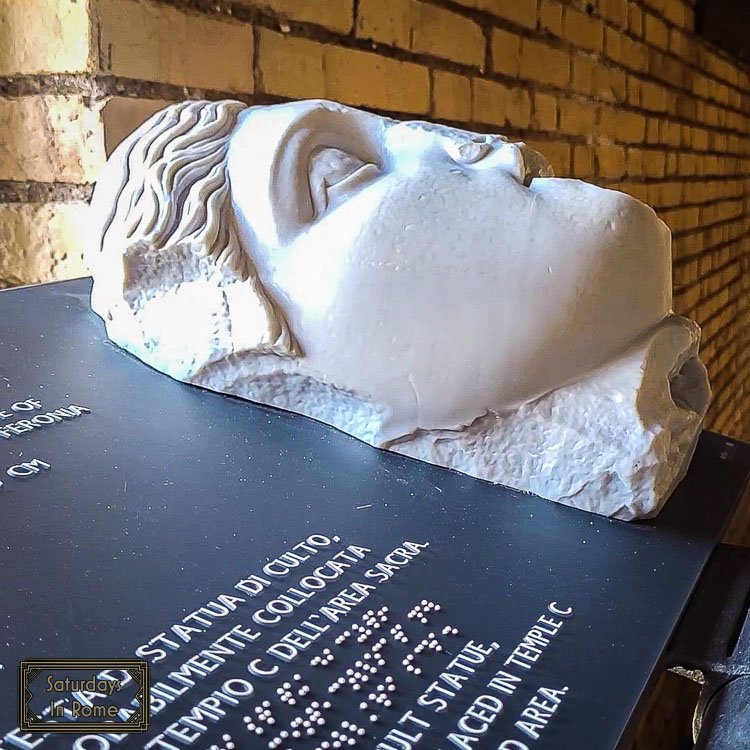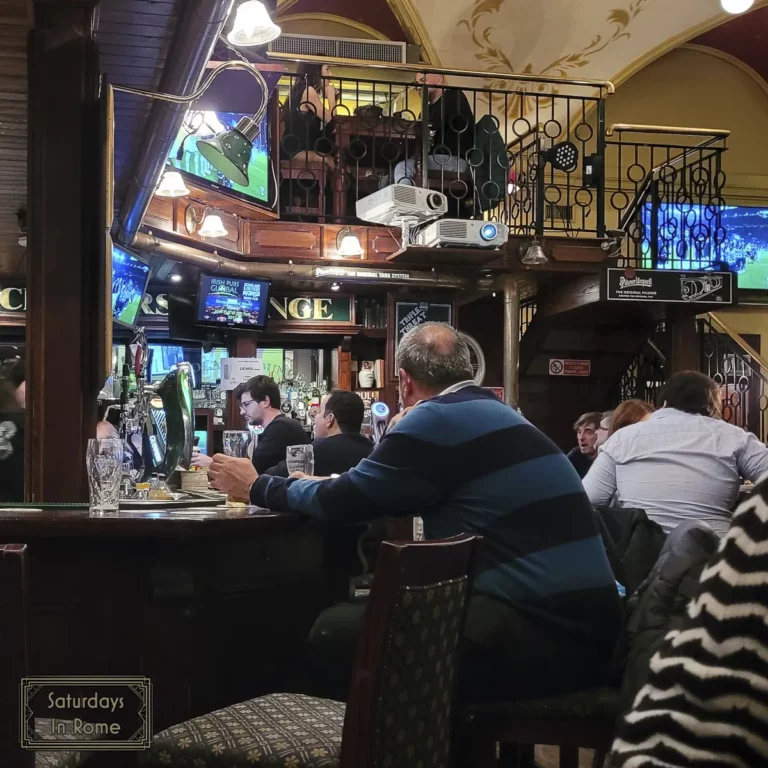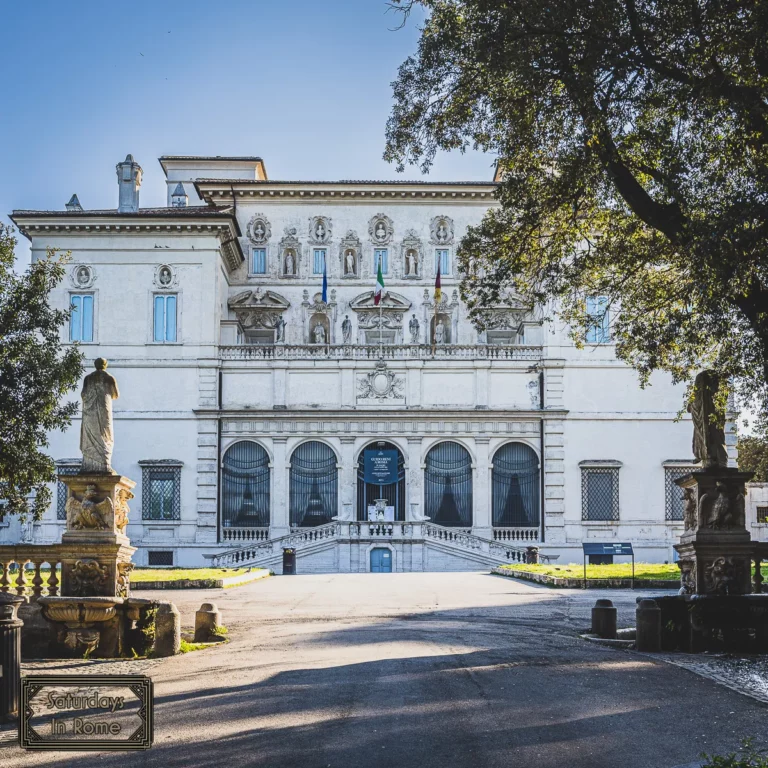The Largo di Torre Argentina Exhibit Is More Up Close
The Largo di Torre Argentina has a new exhibit available for visitors to walk through the history of this site best known for Caesar’s assassination and cats.
New Exhibit
In 1926, in preparation for some new construction, the area between via del Teatro Argentina, via Florida, via S. Nicola de’ Cesarini and corso Vittorio Emanuele was excavated and one of the most important archaeological complexes in Rome was brought to light.
Need Help Planning?
- Cheap Flights: Find The Most Affordable Flights.
- Accommodations: From 1 to 5 Stars And More.
- Car Rentals: Affordable Travel Across Italy.
- Sightseeing Tours: Explore Some Amazing Tours.
- Buying An eSIM: Stay Connected In Italy.
This post includes affiliate links.
Inaugurated on April, 21 1929 by Mussolini, the Sacred Area of Largo Argentina (Area Sacra di Largo Argentina) has since then maintained its amazing beauty in the paved square on which four temples stand, known as temples A, B, C and D. Now, visitors can descend from street level and experience this archaeological site up close and personal.
Visiting The Area Sacra Of Largo Di Torre Argentina
On 20 June 2023, following the completion of the works conducted under the direction of the Capitoline Superintendence (Sovrintendenza Capitolina) and made possible thanks to being sponsored by luxury jeweler Bulgari, the Sacred Area was reopened to the public, with a new path on the catwalk which for the first time allows you to appreciate the structures at close range.
English Language Displays
There are two exhibition areas on the eastern edge of the area that show a selection of the numerous artifacts found during the demolitions and excavations of the Fascist era. The site is wheelchair accessible through the use of a lifting platform, and while inside, differences in height and jumps in altitude have been eliminated.
The Ruins Of Largo Di Torre Argentina
Largo Argentina is one of the most important historical and archaeological sites in Rome. There are remains of four temples (A, B, C and D) from the days of the Roman Republic as far back as the 4th century BC, there is a sanctuary for our feline friends and the site of a very well known murder more than 2000 years ago.
The name Argentina derives from Argentoratum, an old name for the city currently called Strasbourg, the city of origin of Johannes Burckardt who was a priest and chronicler during the Italian Renaissance. It was discovered during construction work in 1926 and excavated until 1928, with subsequent excavations until 1970. The remains of four temples are called A, B, C and D because not enough is known about the history of these temples, but the most probable identification of these temples is the following:
- Temple A is the Temple of Juturna
- Temple B is the Temple of Fortuna Huiusce Diei
- Temple C is the Temple of Feronia
- Temple D is the Temple of the Permarini Lares
Temple B Remains
The Life and Death of Julius Caesar
Gaius Julius Caesar was born on July 12, 100 BC into a patrician family which claimed descent from Julus supposed descendent of the goddess Venus. He was a Roman general, statesman, and a member of the First Triumvirate, which was an alliance among three prominent politicians (Caesar, Pompey, and Crassus) to bypass the complex set of checks and balances of the constitution of the Roman Republic. The constitution was designed to prevent a man from rising above the rest and creating a monarchy. In order to bypass this they promised to use their respective influence to help each other.
The Murder Of Julius Caesar
The murder of Julius Caesar (Giulio Cesare) is well known as it has been artistically recreated many times on stage, film and in literature. Caesar was 56 years old when he was murdered on March 15, 44 BC inside the archaeological complex on Largo Argentina, behind temples B and C. On that site is what remains of the Curia of Pompey, where the sessions of the Senate of Rome were held and on that fateful day Julius Caesar was stabbed to death by a group of around twenty Roman senators who considered themselves guardians and defenders of the republican tradition and who were opposed to any form of personal power.
Julius Caesar’s Legacy Today
The legacy of this act continues today as a reminder every March 15th to “Beware the Ides of March”. This warning from a mystic in Shakespeare’s play, and every pop culture reference to the Ides, makes it seem like the day itself is cursed. Another legacy is the word: Caesaricide. This is understood to mean the physical elimination of those who are believed to be against freedom to gain personal power. Over time the definition has broadened to take on the meaning of an extreme attempt to defend the values of civil liberties and to preserve at any cost the values of tradition endangered by a despot.
Cat Sanctuary
The Torre Di Torre Argentina Cat Sanctuary
There continues to be more excavations and improvements being made to this important site, but one group of residents who will not be disturbed are the cats who call Largo di Torre Argentina their home. The Torre Argentina Cat Sanctuary (Il Santuario dei Gatti di Torre Argentina), which is also known as Feral Feline Colonies Torre Argentina, and according to the Cats of Rome website:
“More than two thousand years have passed since then, but surely something of Caesar’s spirit survives in some of our aristocratic cats who proudly guard the ruins of ancient temples.”
In 1929, stray or abandoned cats settled in Largo Argentina because of the protection offered to them by the archaeological sites located below street level. At the same time, a procession of cat lovers, which the Romans called Gattari with a certain condescension, began to take care of cats and bring them food. In addition, a habit of abandoning unwanted cats in Torre Argentina began to spread among the Romans.
The Cat Sanctuary Today
Today, all of the cats in the sanctuary are all sterilized, vaccinated, tested and freed from internal and external parasites. The reduction of feline stray animals is the main purpose of the activity of the colony of Torre Argentina. It wants to be known as a Center for the Promotion of Sterilization and not as a shelter for stray cats in distress. The requests for help are more than can be supported, so they have needed to severely limit the access of new animals only to those cases that do not offer other possibilities of solution. Mutilated, blind or variously handicapped cats are welcomed with priority.
How to visit Largo di Torre Argentina
Largo Argentina is very centrally located in Rome on via di San Nicola De’ Cesarini with a major bus stop, tram line and taxi stand surrounding the piazza. The buses available are the #30, #40, #46, #62, #64, #70, #87, #492 and the #3 tram is also nearby.
Tickets For the Sacred Area Of Largo Argentina
The ticket office and bookshop can be found at the Torre del Papito, piazza dei Calcarari. The tickets cost €5 for non-residents, €4 for residents and free for MIC card holders. The site is open from Tuesday to Sunday with the following hours:
From the last Sunday of October to the last Saturday of March, 9:30 to 16:00
From the last Sunday in March to the last Saturday in October, 9:30 to 19:00
Last admission one hour before closing
Open December 24th and 31st, 9:30 to 14:00
Closed on: Mondays, December 25th, January 1st and May 1st
Female Colossus Head
More Nearby Sites Of Interest
When you are done visiting the Sacred Area of Largo di Torre Argentina, you may have some time to check out these other nearby sites:
- Ancient Sites In Rome – Exploring the Most Important Sites.
- Is It Worth Visiting Castel Sant’Angelo In Rome?
- The Tiber River In Rome – History, Facts And Optimism.
- The Oldest Pharmacy In Rome Served Popes And The People.
- The Spanish Steps Flowers Are A Sure Sign Of Spring In Rome.
- The Aurelian Walls In Rome Are Ready For Climbing.
- Trajan’s Market Is Where Ancient Romans Loved To Shop.
- Piazza del Popolo Rome – The Beauty And The History.
- The Ancient Circus Maximus In Rome Is Worth Seeing.
- Why Is The Roman Forum Important Still To This Day?
- The Palatine Hill In Rome, Italy – This Is Your Guide.
- The Thermal Baths Of Diocletian In Rome Shouldn’t Be Missed.
- The Forum of Augustus.
- Piazza di Spagna, Rome and the Spanish Steps Are Beautiful!
- Caracalla’s Ancient Roman Baths In Rome Are Worth A Visit.
- Largo Di Torre Argentina Rome Is A Sanctuary In The Ruins.
- Piazza Vittorio Emanuele II Has Mystic Treasures And Movies.
- Nero’s Golden Palace Is An Underground Trip Through History.
- The Ponte Sant’Angelo Statues Line A Beautiful Bridge.
- These Famous Talking Statues Are Talked To With Complaints.











